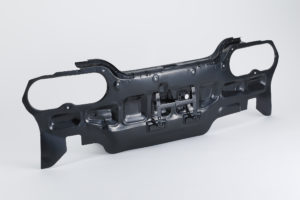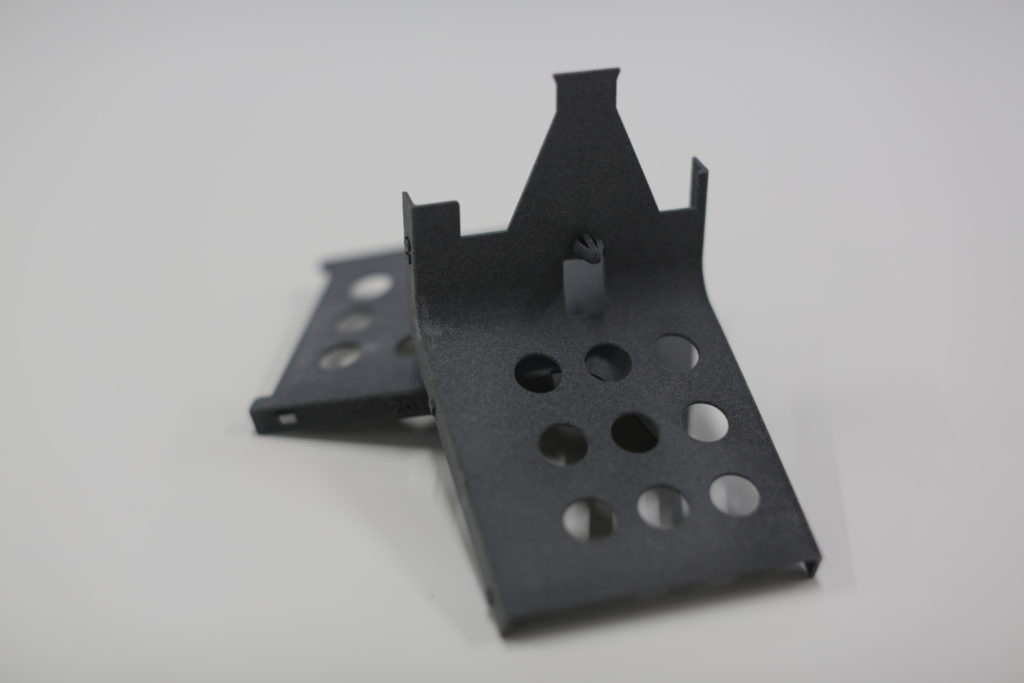
Nissan to create NISMO Heritage Parts with dieless forming, 3-D printing
By onAnnouncements | Business Practices | Market Trends | Repair Operations | Technology
Nissan last week announced it would use resin 3-D printing and its relatively new dieless body panel forming technique to produce more parts for discontinued vehicles.
Though the OEM will only sell the NISMO Heritage Parts in the Japanese market, its work still highlights technological concepts with potential for vehicle restorers and body shops.
The overall effort might also be of interest: Nissan said its NISMO Heritage Parts program started just four years ago and has grown from 80 to 300 parts.
Nissan revealed its body-panel forming technique in 2019 as an solution for the problem of an exhausted supply of stamped replacement parts. It costs too much and takes too much time to build a new die to stamp more of the parts for vehicles the automaker no longer sells, the OEM said then.
“This technology has significant potential for lowering costs when producing in low volume,” Nick Maxfield of Nissan global communications wrote in a 2019 email. “We ordinarily wouldn’t be able to offer body panels for cars that we no longer make: there is no business case, since the die costs are prohibitively expensive. The business case (i.e. return on investment) only becomes viable when you start producing in very high volumes, but demand simply isn’t high enough to reach that point. Dieless forming, by contrast, requires one-time up-front investment in the robots (which can produce an infinite variety of parts—within reason!—once you’ve purchased them) and there are some additional costs involved in developing the data required to fabricate the parts. These costs are substantially lower than the cost of designing and building numerous dies for each specific body part if we were using a stamping process.”
Nissan’s system uses two robots “pressing rod-shaped molding tools onto opposite sides of a steel sheet to incrementally deform and mold a panel.” The process resembles two really smart woodpeckers working in tandem.
“By working closely with its suppliers, Nissan has achieved the high-quality required for automobile parts,” Nissan said.
The OEM said it will produce rear panels for the R32 Skyline GT-R.
Maxfield described the system’s potential in 2019:
– We can make both small and large parts with dual-sided dieless forming. The requirements are basically that the parts can feasibly be shaped from sheet steel, and that we have the data to do so. In addition to the “forming” (i.e. shaping/deformation) process itself, there are additional processes such as flanging and trimming. This means that the dieless forming process itself accommodates a wide variety of part sizes, since they can be cut out of the steel sheet and finished separately, no matter the size.
– In terms of materials, we have mainly been working with standard auto steel for our purposes, but the technology can be applied to resin parts and also other metals such as aluminum. We’d need to adapt and test, of course, which would take time.
– That said, most of the work in the development process so far has gone into body panels and hoods, and that’s where we see a lot of potential for this technology at present—especially since one of the key benefits is the lack of dies (which of course are very costly but essential for the stamping process).
Nissan said it used the 3-D printing to create a harness protector for the R32 Skyline GT-R.
“With the harness body supplier’s cooperation, Nissan redesigned the parts and conducted performance tests that adapt to 3-D printers, enabling a shorter time to commercialize high-standard parts,” Nissan wrote in a news release.
3-D printing company Solize said it worked with Hewlett-Packard to help Nissan produce the part out of the thermoplastic powder HP High Reusability PA 11. Solize said the material offered “high mechanical properties and design flexibility.”
“SOLIZE has more than 30 years of experience and has honed its technology since it first deployed 3D printers in Japan.” Solize CEO Yasutoshi Kudo said in a statement. “We have jointly developed 3D printing technology with Nissan for commercial parts that have been discontinued and take charge of manufacturing the parts. With HP’s market leading 3D printing technology, we are able to support industries including automotive with sustainable production that delivers fast, high-quality and cost-effective results.”
Solize noted that 3-D printing permitted “just-in-time” inventory production of replacement parts. Basically, rather than a dealer or OEM storing a bunch of parts and molds somewhere until somebody needs a component, you would just print a part when requested.
“We are seeing leaders of industry like Nissan recognize the massive cost implications of storage, molds and logistics for replacement parts and how industrial 3D printing can help,” HP 3-D printing and digital manufacturing global commercial business head Jon Wayne said in a statement. “Digital manufacturing is a viable, long-term solution for accelerating production, transforming supply chains and activating industries such as automotive. Together with SOLIZE we are focused on helping businesses transform their manufacturing with sustainable, digital production.”
Solize said it and HP would work with Nissan on replacement parts for the R32, R33 and R34 Skyline GT-Rs.
More information:
“Nissan uses new technologies to expand NISMO Heritage Parts range in Japan”
Nissan, March 15, 2021
“SOLIZE and HP Enable Sustainable 3D Production of Replacement NISMO Heritage Parts”
Solize, March 16, 2021
Images:
Nissan said in March 2021 it would use dual-sided dieless forming to produce rear body panels for the R32 Nissan Skyline GT-R, which is discontinued. (Provided by Nissan)
Nissan said in March 2021 it used 3-D printing to create a resin replacement harness protector for the R32 Skyline GT-R. (Provided by Nissan)

